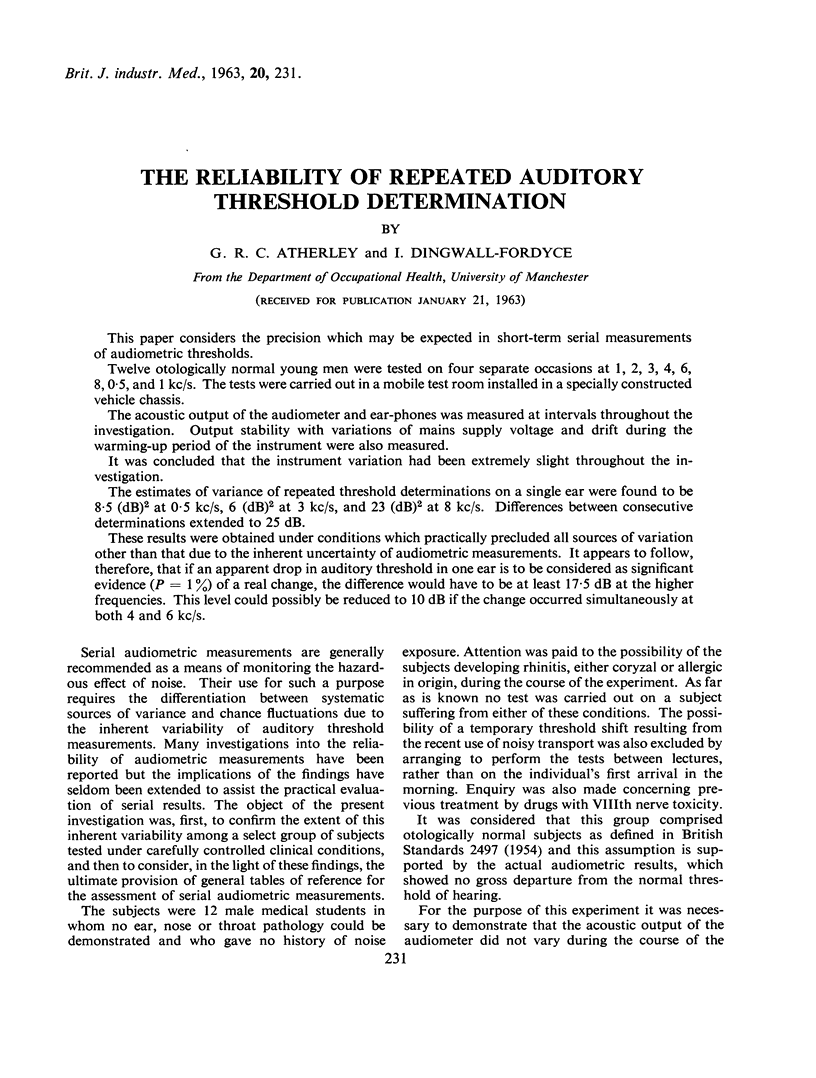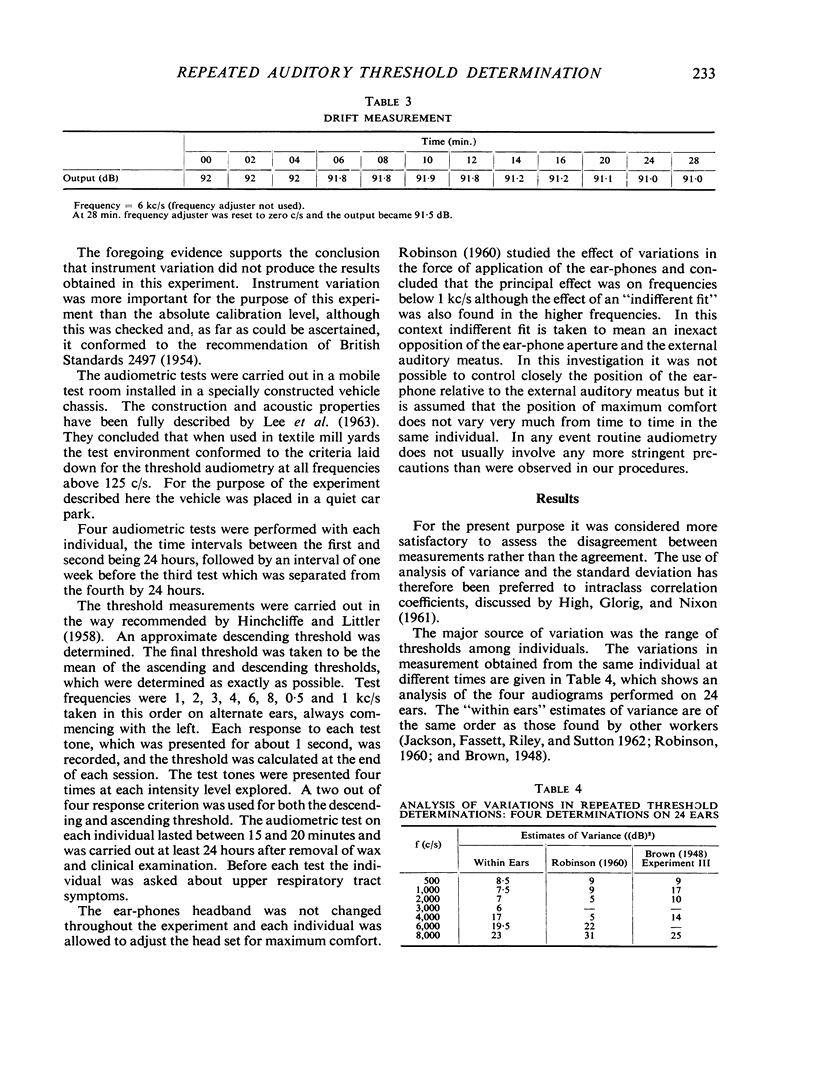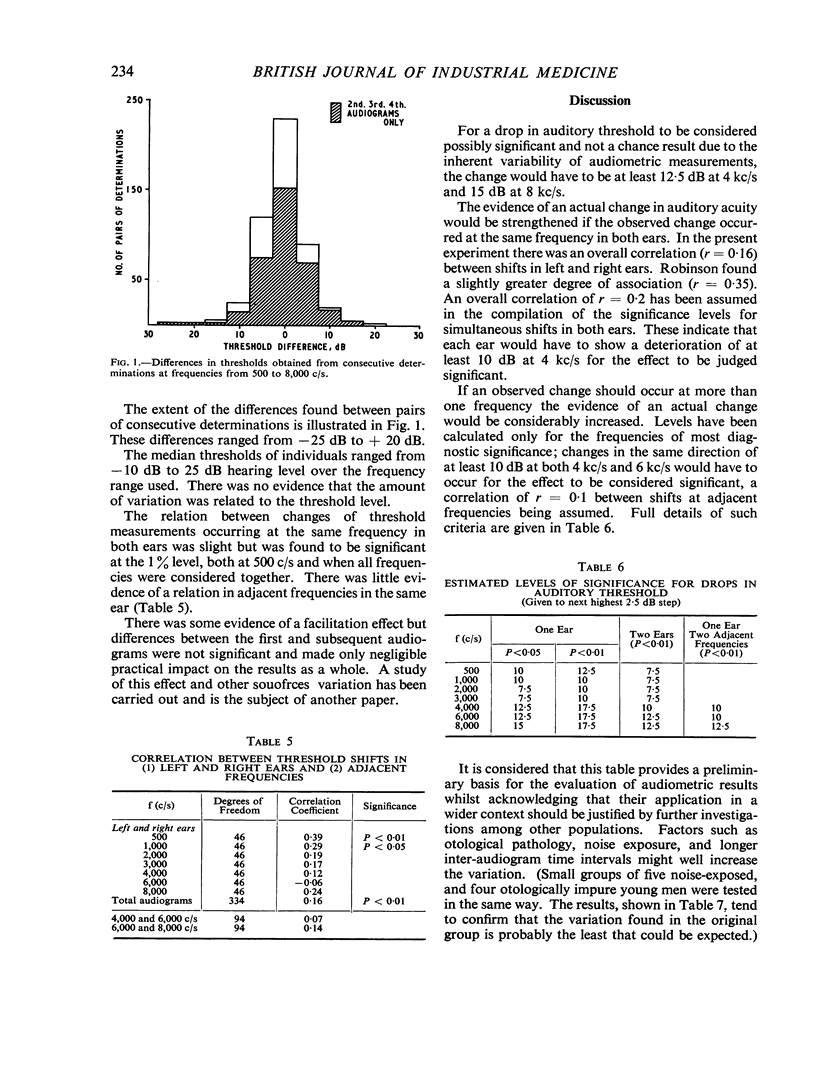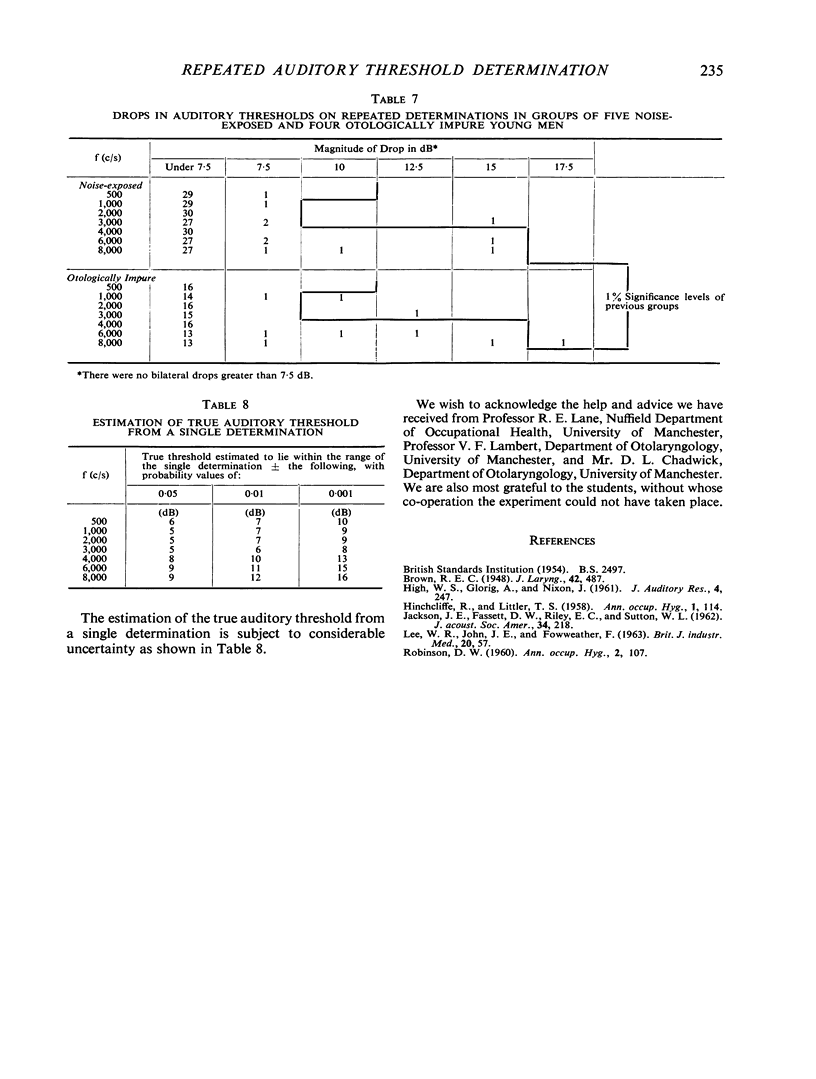Abstract
This paper considers the precision which may be expected in short-term serial measurements of audiometric thresholds.
Twelve otologically normal young men were tested on four separate occasions at 1, 2, 3, 4, 6, 8, 0·5, and 1 kc/s. The tests were carried out in a mobile test room installed in a specially constructed vehicle chassis.
The acoustic output of the audiometer and ear-phones was measured at intervals throughout the investigation. Output stability with variations of mains supply voltage and drift during the warming-up period of the instrument were also measured.
It was concluded that the instrument variation had been extremely slight throughout the investigation.
The estimates of variance of repeated threshold determinations on a single ear were found to be 8·5 (dB)2 at 0·5 kc/s, 6 (dB)2 at 3 kc/s, and 23 (dB)2 at 8 kc/s. Differences between consecutive determinations extended to 25 dB.
These results were obtained under conditions which practically precluded all sources of variation other than that due to the inherent uncertainty of audiometric measurements. It appears to follow, therefore, that if an apparent drop in auditory threshold in one ear is to be considered as significant evidence (P = 1%) of a real change, the difference would have to be at least 17·5 dB at the higher frequencies. This level could possibly be reduced to 10 dB if the change occurred simultaneously at both 4 and 6 kc/s.
Full text
PDF






